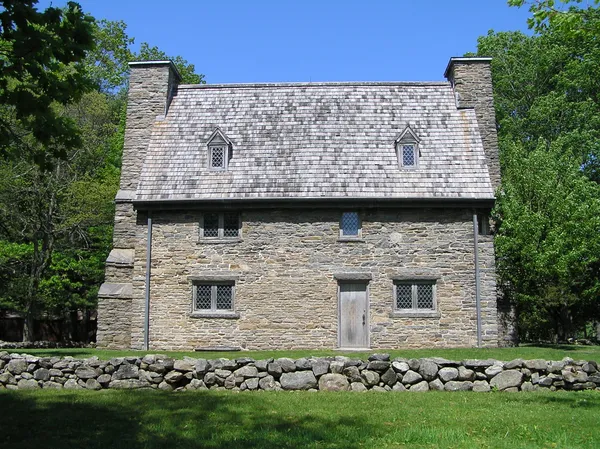
Henry Whitfield State Museum
248 Old Whitfield Street, Guilford, CT 06437 - United States
Take a self-guided tour of the Whitfield House with three floors of exhibits, furnishings, and artifacts. The Visitor Center also features a gift shop, research library (by appointment), and exhibit galleries.
Construction of the Henry Whitfield House began in 1639 when a group of English Puritans, including Reverend Henry Whitfield and his family, entered into an agreement with the Menunkatuck band of the Quinnipiac tribe and renamed the area Guilford. Built of local granite, the house was one of the colonial settlement’s four stone houses that functioned as defensive buildings and private homes. It is now considered to be Connecticut’s oldest house and New England’s oldest stone house. Since 1900, it has been owned and operated by the State of Connecticut as a public museum, and the site is a State Archaeological Preserve.
The house underwent many structural changes over the course of its nearly 400 years. Restored by noted architects Norman Isham and J. Frederick Kelly in the early 1900s, it is an important example of Colonial Revival restoration work and was named a National Historic Landmark based on these historic preservation projects.
The Henry Whitfield House is a physical reminder of the European settler colonialism of the 1600s, as well as the Colonial Revival era of the 1800s-1900s that celebrated and glorified European ethnocentricity and superiority. The museum is striving to confront the facts about the site’s history in order to acknowledge past injustice, recognize how that injustice manifests in society today, and work towards an equitable future for all people.
Exhibits
Participation in Museum Day is open to any tax-exempt or governmental museum or cultural venue on a voluntary basis. Smithsonian magazine encourages museum visitation, but is not responsible for and does not endorse the content of the participating museums and cultural venues, and does not subsidize museums that participate.

